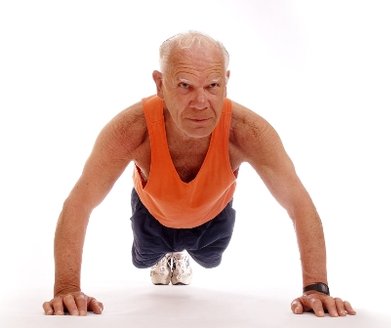REFERENCES
"Max is a great expert in Personal Training. His professional approach is of great added value for the PT business." Joost Vansteenkiste
Lecturer & Coördinator Health Coaching at Howest University College -Bruges
"Max is a big inspiration to me in how you can combine different talents into one passion, one job, one organization. I met him as teacher with a lot of knowledge and ability to motivate the whole group to get the best out of their self. "
Evodie Koolstra, personal trainer
"Max understands client service vey well. He tailors his expertise to make sure his clients reach their full potential. I recommend Max for all levels of client"
Christopher Ryder, Vice President External Affairs, BHP Billiton Canada Inc.
"Max’s functional input in my training strategy is crucial to keep me on the tracks, literally and figurally. The program of Max not only offers me my getaway ticket from injuries, it also allow me to work in its utterly inspiring setting to challenge my limits and ease my mind at the same time. His straight forward and expert approach helps me to fully balance and strengthen my body which is absolutely vital to put my trail running ambition into practice."
Veerle Van Hoeck, Belgian Champion trailrunning, member of the Salomon Team Belgium
"Max is a pro in transforming dull fitness exercises into challenging, and more important, fun functional ways to discover the strengths but most important, weaknesses of your own body. Already after one hour of training his expert eye sees which parts of your body you need to improve to become a better athlete, but also to prevent the modern day-to-day injuries of a working man. (Such as the usual problems when you sit behind a desk 8hours a day..)"
Stef Damen, Sales Officer at Dafra Pharma International and passionate mountainbiker
Over the author
Max Icardi heeft geneeskunde in Turijn (ITA) gestudeerd voor dat hij zijn master in Sports Medicine aan de University of Glasgow in 2002 behaalde. Sindsien is hij altijd actief geweest in de individuele training van amateurs tot topsporters. Hij woont in België sinds 2004 en is de oprichter van het Functional Training Network (een kwaliteitslabel voor personal trainers), auteur van het Postgraduaat cursus ‘Functional Trainer’ aan de Hogeschool Brussel en Torhout en gerespecteerd internationale spreker.
Lectures slides:
25 februari 2015
Profiting from Functional Training: what is the future of the fitness industry?
Fitness center members are looking for functional programming and equipment. They now realize that form follows function. What good is having "cut" biceps if you can't lift a toddler without wrenching your back? That's the premise behind the evolving concept of functional fitness -- an approach that can transform the fitness industry toward lifestyle enhancements and increased profitability.
Training for real life
What Pilates, yoga and functional training do is train for life. They prepare the body so it can perform daily activities -- walking, bending, lifting, climbing stairs -- without pain, injury or discomfort. Functional training inclusive of balance, posture and coordination is critical for many older adults.
To receive the "real life" benefits of resistance training, exercisers should use multiple muscle groups in an integrated fashion. This runs counter to the idea behind machine-based weight training, which was developed to allow bodybuilders to isolate single muscle groups. The muscles get stronger using machines and free weights, which is an essential component of any fitness program, but the all-important synergy of the body will not be accomplished. By contrast, functional training, such as SAQ (speed, agility and quickness), Pilates and yoga,challenges the body to work as a whole, firing up the muscles in a sequential pattern.
Considerations for program development
In putting together each workout, trainers can choose from thousands of exercises, including more than 25 ways to perform a simple forward lunge. Mixing it up helps mitigate boredom and the exercise dropout factor that so often follows. It may be more difficult to choreograph and perform, but it will be more fun and beneficial to the member. Because of the integration of more muscles into the workout, functional fitness can also be an effective alternative to traditional training for those trying to lose weight. A good example is training on a stability ball. Every time the ball moves, the participant has to activate muscles deep in the pelvis, back, abdominals and hips. Because of the increased muscle activity, more calories are used, and more muscle is potentially built.
To maximize human performance, trainers must have a good understanding of what affects performance. The factors that play the greatest role in performance are power (strength and speed), agility (flexibility, mobility, stability), cardiovascular and respiratory conditioning, sports skills (neuromuscular coordination and efficiency) and genetic potential.
Physiological benefits
Metabolism. A major fraction of total daily energy demand arises from resting metabolism, and it is, thus, important to document the resting metabolism of clients. Metabolism decreases by about 10 percent per decade after the third decade of life. One reason is the loss of metabolically active muscle mass, and a parallel increase in metabolically inert fat deposits.
Muscle strength peaks at around 25 years of age, plateaus through 35 or 40, and then shows an accelerating decline, with a 25 percent loss of peak strength by age 65. Muscle mass decreases, apparently with a selective loss in the cross-section, if not the number of, type II fibers. Other possible causes of functional loss include a deterioration of fiber recruitment, prolonged relaxation time and decreased velocity. Changes are greater in the legs with aging. Loss of strength progressively impedes everyday living. Muscle strength can be greatly improved by as little as eight weeks of resistance/functional training. Stronger muscles further enhance function by stabilizing joints, reducing the risks of falls, and improving balance and coordination. There is a progressive decrease in the calcium content and a deterioration of bone with aging. Changes are more marked in women than in men, due, in part, to hormonal changes and a lower intake of calcium and protein. Regular load-bearing exercise can halt and sometimes even reverse bone mineral loss through the eighth decade of life. Functional exercises reproduce appropriate bone stress associated with activities of daily living. Exercise training cannot restore tissue that has already been destroyed, but it can protect exercisers against a number of chronic diseases. More importantly, it maximizes residual function. In some instances, biological age is reduced by as much as 20 years. Life expectancy is increased, partial and total disability is delayed, and there are major gains in quality-adjusted life expectancy. Exercise is, thus, an important component of healthy living.
Lifestyle and lifetime changes
All the workouts in the world won't mean anything if your clients don't change the way they move on a daily basis. While it is important to The strengthen the core, clients and members also need to sit, stand and get out of bed in ways that don't strain the body. In other words, try combining functional training with changes in the way your clients and members function. The results could be with them for a lifetime. The fitness industry as awhole has to understand that they have been selling memberships instead of result for too long. The fitness club of the future is a place where knowledge is passed on through professional, tailored, coaching. Done with the ALL-IN formules, consumers want to have the freedom to choose the best option for them from a simple yet complete menu of services. Done with the idea of 'renting out' crosstrainers, bikes and treadmills for a monthly fee...'basic' clubs already offer that for a ridicolously cheap price. Nothing wrong with that...in the very end, when you go skiing, or swimming, or when you play tennis, there are usually no coaching session included in the rent of the accomodation. Why should it be different when it comes to exercise and lifestyle? The huge success of private training studio's should push the whole fitness industry to re-think itself and convice club owners to make a clear choice: it is either low service and budget price or high service and adequate price. The grey zone is doomed to disappear.
Copyright © Max Icardi 2014





